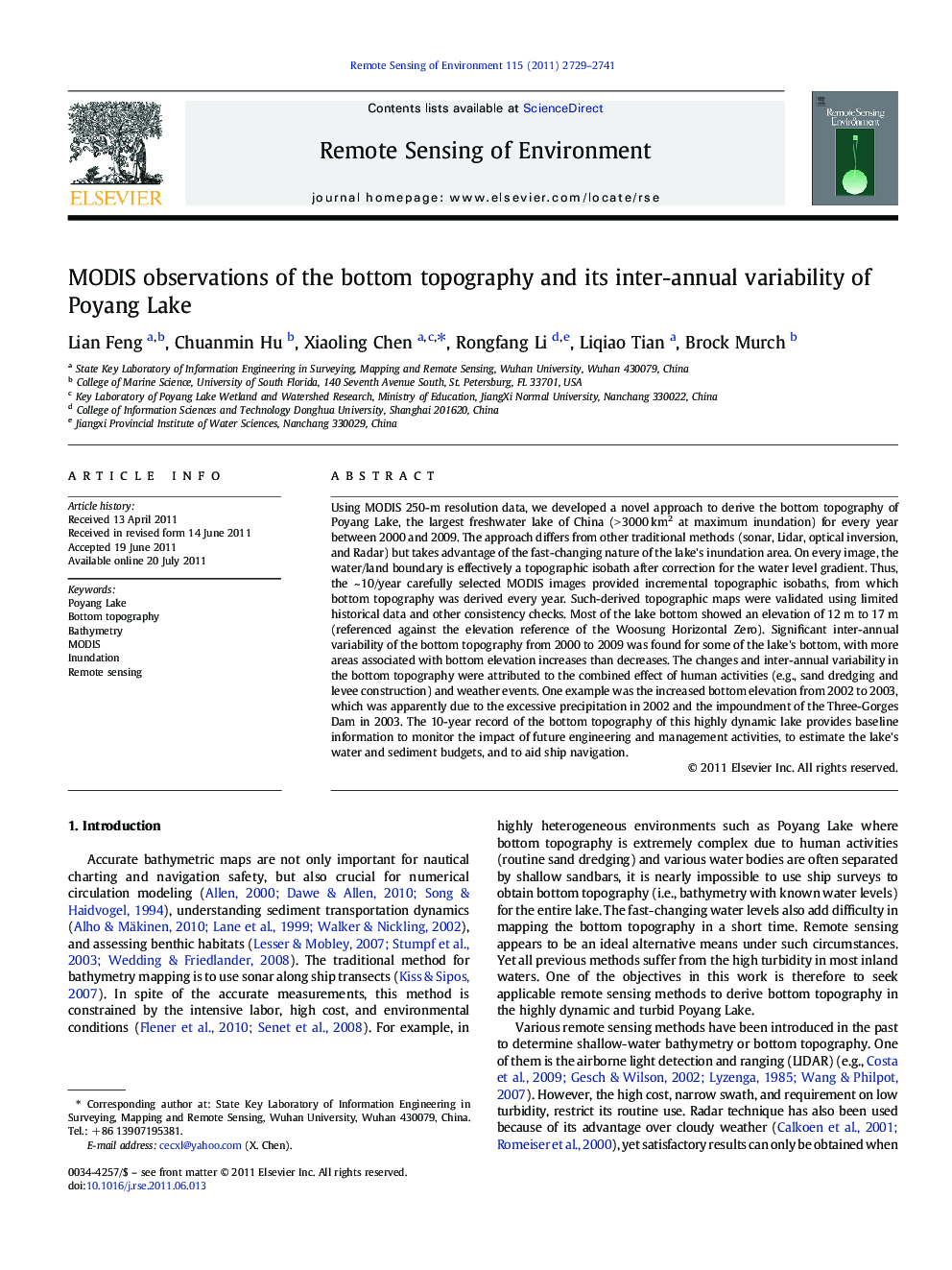| Article ID | Journal | Published Year | Pages | File Type |
|---|---|---|---|---|
| 4459318 | Remote Sensing of Environment | 2011 | 13 Pages |
Using MODIS 250-m resolution data, we developed a novel approach to derive the bottom topography of Poyang Lake, the largest freshwater lake of China (> 3000 km2 at maximum inundation) for every year between 2000 and 2009. The approach differs from other traditional methods (sonar, Lidar, optical inversion, and Radar) but takes advantage of the fast-changing nature of the lake's inundation area. On every image, the water/land boundary is effectively a topographic isobath after correction for the water level gradient. Thus, the ~ 10/year carefully selected MODIS images provided incremental topographic isobaths, from which bottom topography was derived every year. Such-derived topographic maps were validated using limited historical data and other consistency checks. Most of the lake bottom showed an elevation of 12 m to 17 m (referenced against the elevation reference of the Woosung Horizontal Zero). Significant inter-annual variability of the bottom topography from 2000 to 2009 was found for some of the lake's bottom, with more areas associated with bottom elevation increases than decreases. The changes and inter-annual variability in the bottom topography were attributed to the combined effect of human activities (e.g., sand dredging and levee construction) and weather events. One example was the increased bottom elevation from 2002 to 2003, which was apparently due to the excessive precipitation in 2002 and the impoundment of the Three-Gorges Dam in 2003. The 10-year record of the bottom topography of this highly dynamic lake provides baseline information to monitor the impact of future engineering and management activities, to estimate the lake's water and sediment budgets, and to aid ship navigation.
► Bottom topography of Poyang Lake derived using MODIS from 2000 to 2009. ► Inter-annual variability of the bottom topography and the reasons. ► The first time of remote-sensing based bottom topography for complex environment.
